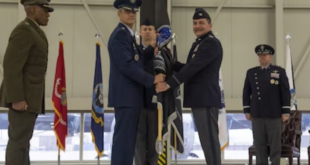It’s amazing to think that humanity is actually about to take its first true foray into space tourism. Achieving weightlessness is a reality through Zero Gravity flights, but now travelling around Moon and even a stay in a space hotel appears to be well within reach. Helen Jameson, Editor-in-Chief, SpaceWatch Global takes a look at just some of the developments in space tourism that could eventually see many of us foregoing our Earthly holiday for an experience that is truly out of this world.
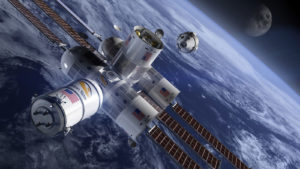
Several years ago, I remember writing an article on space tourism. At the time, it was a bit of a novelty article, might I even say a little pie in the sky. It was just a bit of a departure from the same old topics. However, today I am looking at it in a completely different way. Fast forward ten years and this is seriously becoming reality. The acceleration in the development of space technology – how we get there and back, how we potentially visit and even live there – has been phenomenal and has given the whole field of space tourism a shot in the arm. Safe to say, this is no longer a concept.
We’ve seen re-usable rockets become reality with the massive achievements of launch service providers such as SpaceX, Blue Origin and Virgin Galactic and the other pieces of the puzzle are beginning to come together. We are talking about getting back to the Moon with pioneering private companies, about 3D printed ‘villages’ and bases on the Moon and even Mars from which to explore further into space. The entry of private, commercial companies into the space industry along with the NewSpace movement has been a true catalyst for space tourism. Now, these pioneers are promising some big developments in a very short timeframe. This is not an easy task. It’s fraught with complex challenges, not to mention the sheer amount of investment that is required to push these projects on. XCOR Aerospace recently became a casualty of the space tourism race when the company was forced to file for bankruptcy. Sadly, the prototype of its Lynx suborbital spaceplane was never realised.
Let’s take a quick snapshot of the progress that the principal players are making.
SpaceX
SpaceX entered the whole space tourism race in early 2017 when its CEO, Elon Musk announced that he hopes to send a privately crewed Dragon capsule, containing two paying passengers, around the Moon using the Falcon Heavy rocket, which was successfully tested earlier in 2018.
The two lucky passengers will orbit around the Moon in the Dragon capsule and fly above the lunar surface at the closest point and will reach 400,000 miles away from Earth at the farthest point. In a conference call held in February 2017, Elon Musk estimated that the trip would last for five days. SpaceX plans to run a demonstration mission in automatic mode and without passengers. After this is completed successfully, a crewed mission will follow. SpaceX has garnered a great deal of experience with its Dragon capsule through re-supply missions to the ISS, contracted by NASA. The company currently executes an average of four missions per year carrying cargo, and eventually crew. Dragon is the first private spacecraft to fly to the ISS. NASA has actively encouraged the development of privately crewed missions which will have long-term benefits in terms of driving down costs and driving up flight reliability which in turn benefit future government and private missions.
Blue Origin
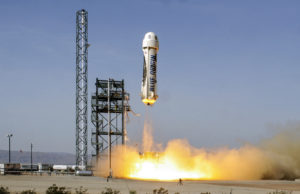
Snapping at the heels of SpaceX and their space tourism plans is Blue Origin with their New Shepherd system, a fully reusable, vertical take-off, vertical landing space vehicle with a pressurised capsule that sits on top of its booster.
The combined vehicles launch vertically, accelerating for approximately two and a half minutes, before the engine cuts off. The capsule then separates from the booster to coast quietly into space. After a few minutes of free fall, the booster performs an autonomously controlled rocket-powered vertical landing, while the capsule lands softly under parachutes, both ready to be used again.
To date, New Shepherd has completed a total of eight flights. The last one, in December 2017, saw the capsule fly ‘Mannequin Skywalker’, a dummy, as well as some customer payloads that carried out various tests including gathering cabin environmental data and the effects of microgravity on gene expression and the cytoskeleton of daphnia water fleas.
The elements of the New Shepard system are being tested extensively, both on the ground and during uncrewed test flights. From vibration tables and thermal chambers to hundreds of engine firings, these tests stress the vehicles and all of their subsystems.
The New Shepard capsule seats six astronauts and is large enough for them to float freely and turn weightless somersaults. We wait to see when Blue Origin believes they are ready to crew the capsule with paying space tourists, although there are suggestions this could happen this year.
Virgin Galactic
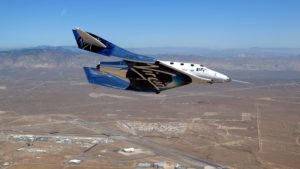
Based in the Mojave Desert of New Mexico, Virgin Galactic is closing in on its goal of sending paying passengers on its suborbital flights. For $250,000 you could take a seat on the VSS Unity and a trip to space.
Virgin Galactic is no stranger to the perils of the journey towards commercial spaceflight. In 2014, the company suffered a devastating loss when its test pilot was killed and another was seriously injured during a test flight of SpaceShipTwo, which crashed. Since then, the company has continued to strive towards making its vision a reality and has recently completed two very significant milestones. It successfully completed a glide test of the VSS Unity spaceplane (the second SpaceShipTwo to be built) in January and then, in April, it completed its first rocket-powered supersonic flight, a major step forward that marks the beginning of the final portion of Unity’s flight test programme. With passengers already booked for its first commercial flight, Virgin Galactic is tantalisingly close to commercial operations.
Initially, Virgin Galactic says it will gain experience from flying large numbers of non-professional astronauts in high acceleration and microgravity environments and will then progress to operate a variety of vehicles from multiple locations to cater for the demands of the growing space-user community.
Where will we stay?
If you want to go down the space vacation route, it’s not going to be cheap and if you plan to literally spend your precious two weeks’ leave up in space, you will need a hotel.
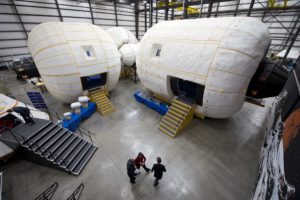
Bigelow Aerospace is a pioneer of expandable space habitats. The company, formed by billionaire entrepreneur, Robert T. Bigelow, was founded in 1999 and since then has been utterly committed to the development of expandable space technology.
This experience led to its Genesis programme, which was a demonstration to validate its habitat architecture. The Genesis I and II spacecraft were launched in 2006 and 2007 respectively, and both successfully deployed their modular, expandable space habitats. Then, In April 2016, the Bigelow Expandable Activity Module (BEAM) was launched and became the first expandable module to reach the ISS. BEAM has been granted an extension to its stay on the ISS by NASA and is currently helping them to understand how to transport and deploy habitats in space. This technological demonstration is used regularly by the ISS astronauts to test radiation levels in the module and is being re-configured to enable more space for stowage. Bigelow hopes that the B330, a fully autonomous stand-alone space station, will provide a destination for space travellers in the future. The B330 will eventually launch at a third of its expanded size and its proposed destination will be the ISS.
Another pioneer in space habitats is Orion Span, a California-based space company set to provide the solution to the question of where to stay with its space hotel, Aurora Station. However, this will be more than just a space hotel. Its founders want it to be the first in a series of destinations in space. As the entire ecosystem begins to mature, and prices start to come down, as they did for the airline industry, Orion Span sees a future where it will be realistic for an increasing amount of people to gain access to space.
The first fully modular space station to ever debut, Aurora Station will operate as the first luxury hotel in space. The exclusive hotel will host six people at a time – including two crew members. Space travellers will enjoy a completely authentic, once-in-a-lifetime astronaut experience where they will participate in research experiments such as growing food in space, for example, during a 12-day journey starting at $9.5 million per person. Deposits are now being accepted for a future stay on Aurora Station, which is slated to launch in late 2021 and host its first guests in 2022. The fully refundable deposit is $80,000 per person and can be reserved online. Before setting off for Aurora Station, guests will go through ‘Orion Span Astronaut Certification’ which is a combination of online and in-person training held in Texas and then finally completed during their stay.
Impressively, just 72 hours after the announcement of Aurora Station, on April 5th 2018, four months of reservations were sold out, reflecting the fascination that space holds for so many people and the prospect of being able to be a part of that experience.
The ultimate vacation, closer than you think!
All of a sudden, it’s all beginning to happen. After the hiatus that humanity has experienced between the Moon landings, which seemed to promise so much, and today, we are on the very cusp of truly becoming space travellers. The private sector has had much to do with this acceleration in space travel development. With pioneering players pushing each other on to develop the transport that we need to get to space on a regular basis, and with the development of destinations in space, we are coming to a point where the ecosystem is in place to sustain space tourism into the future.
The cost of these space trips are set to be out of the realms of the average person, but, as the market matures, a fall in prices will inevitably see more people able to afford this completely unique experience. But perhaps more importantly, space tourism will be a critical step in our journey to exploration into deeper space. In building these habitats and understanding more about what we have to do to make space tourism a success, we are creating the right environment from which to further develop our capabilities and to make that Moon Village happen or to establish that colony on Mars. We will learn and we will become more accustomed to using space as an extension of our own planet.
One thing is for certain – this is happening. Look back to the days when airline travel was tremendously expensive and exclusive – the preserve of the rich. Well, surely space tourism is going to follow the same trajectory and we will see it become more affordable and a reality for the many and not the few. We are living in exciting times and this is a new era for humanity in space.
 SpaceWatch.Global An independent perspective on space
SpaceWatch.Global An independent perspective on space


